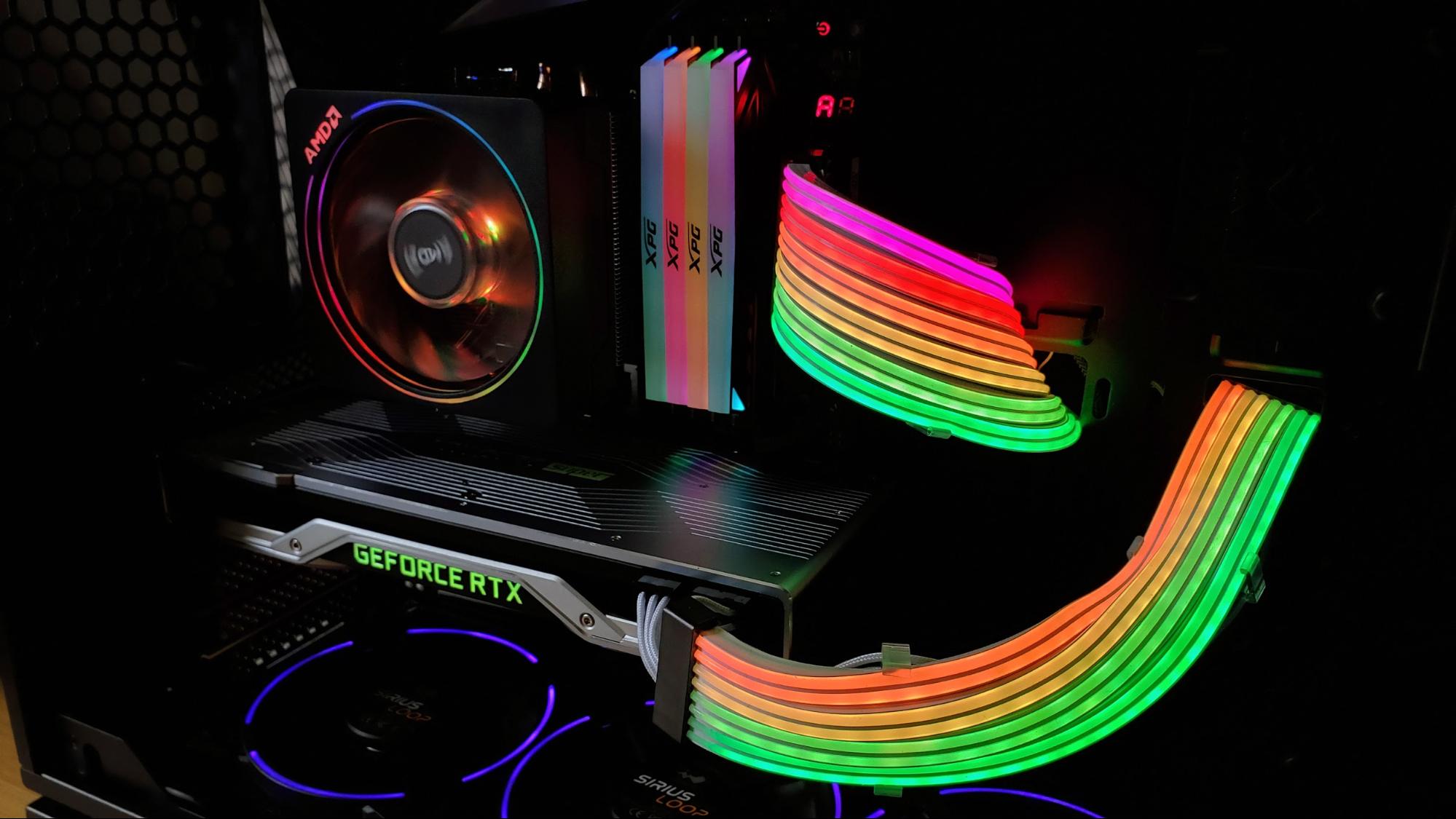The Disco Pixel PC: Building a Flashy, Formidable Mid-Tower in InWin’s 309 Case
It’s like a Lite-Brite that you can overclock
The InWin 309 is definitely a unique case, with striking visuals up front and a nice selection of ports running down its left side. The left side panel is also tempered glass, with one of the easiest-to use mounting/removal mechanisms we’ve seen in a case yet. Depress the handle up top and the door lifts out and off. Drop it back in the bottom of the case and close the top, and everything pops easily and securely back into place.
Its main drawbacks are its $200 price (which is a lot to pay, especially when you consider you’ll have to bring your own fans) and the fact that the blocked-off front and top means airflow is more restricted than on most cases. There’s plenty of room for components though, so as long as you mount fans in the right places, keeping things cool shouldn’t be a problem. Even with our lack of an exhaust fan, the core components didn’t get too warm. But of course, your mileage will vary, depending on the components you use.
The trio of buttons on the edge of the InWin 309’s front panel mean you can do a lot with the case’s lighting without installing any software. But you’ll probably want to grab the company’s Glow2 software, because it’s stable, intuitive, and will let you do even more with that 144-pixel front panel.
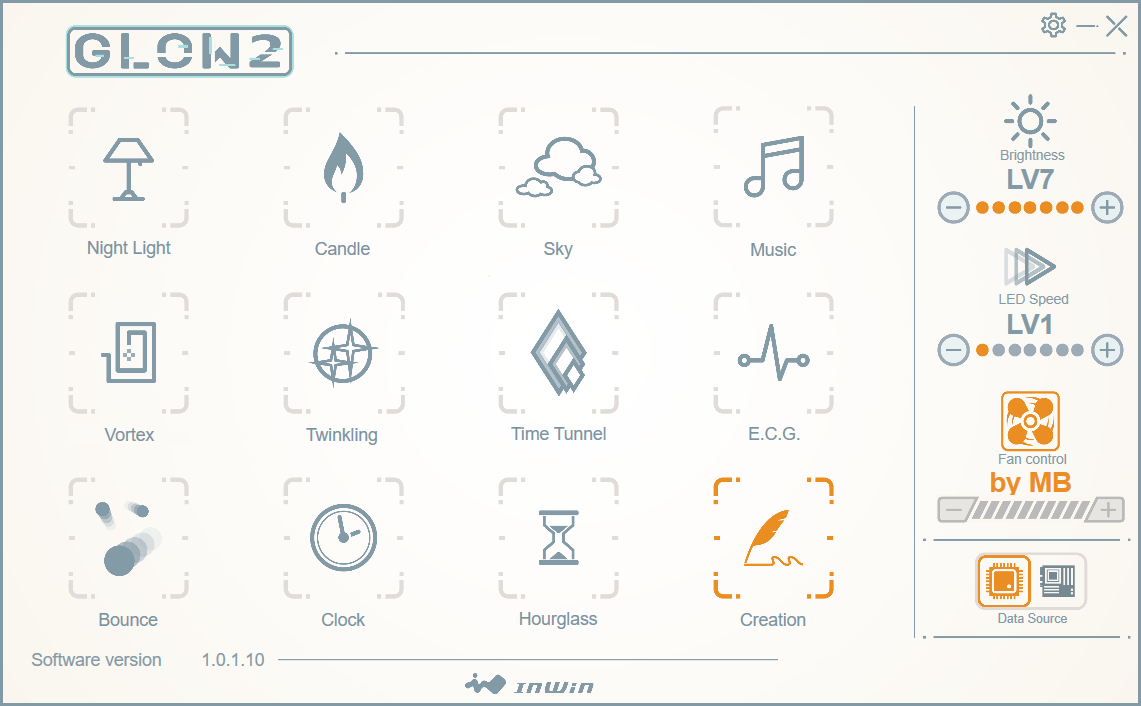
From the main window of Glow2, you can change the color, brightness, and speed of the 11 pre-set visuals. Note that the Candle and E.C.G. presets react to the sound in your room thanks to a microphone built into the top of the case. The Music preset reacts to music, games or whatever is playing on the system itself--any audio playing in Windows seems to trigger the front pixels to light up with the Music preset is selected.
You can also choose to let your motherboard control the lighting. But the lighting options in most motherboard software are far less versatile, intuitive, and visually striking as what you’re about to create with Glow2.
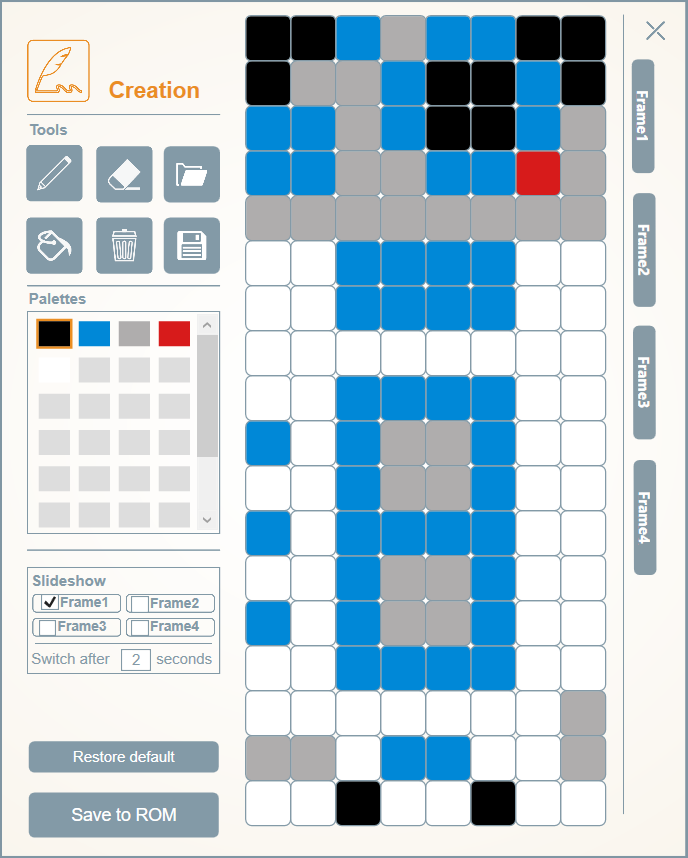
The Creation option in the Glow2 software lets you import or “draw” your own patterns and save them to one of four frames. Controlling the transition between them means you can even create some crude animation effects. The only real limitation is the resolution. With 8 pixels across and 18 down, representing anything but the most basic of images is next to impossible. Even the Tom’s Hardware hammer was too complex to really pull off on the front of the InWin 309. But abstract patterns, particularly the Twinkling preset, sure look good.
The software is also handy for those times you don’t want to be blinded by the light. There are seven levels of brightness, with the highest being arguably too bright for a dark room, and the lowest turning the lights off completely. As much as we light pretty lights, there will always come a time when you want the light show to go away while you watch a movie or get some sleep.
Performance and Temperatures
On the performance side of things with the Disco Pixel build, we were aiming for “good enough” more than true top-end performance. Still, with an 8-core AMD Ryzen 7 3700X, 32GB of DDR4 3600 RAM, a 2TB Intel 660p NVMe SSD and an Nvidia GeForce RTX 2070 Super behind the light show, this system is no slouch. But it does often get outperformed by our previous RGBaby build, with its 12-core Ryzen 9 3900X CPU and Zotac RTX 2080 AMP graphics.
Get Tom's Hardware's best news and in-depth reviews, straight to your inbox.
The Disco Pixel delivered a Geekbench 5 score of 7804, or about 26% less than the RGBaby’s 10519 showing on the same test. On Cinebench R20, the Disco Pixel’s multi-core score of 4500 was also substantially lower than the RGBaby’s 6915. But in the single-core version of the test (which is arguably more important for gaming), the Disco Pixel’s 472 wasn’t that far off from the RGBaby’s 494.
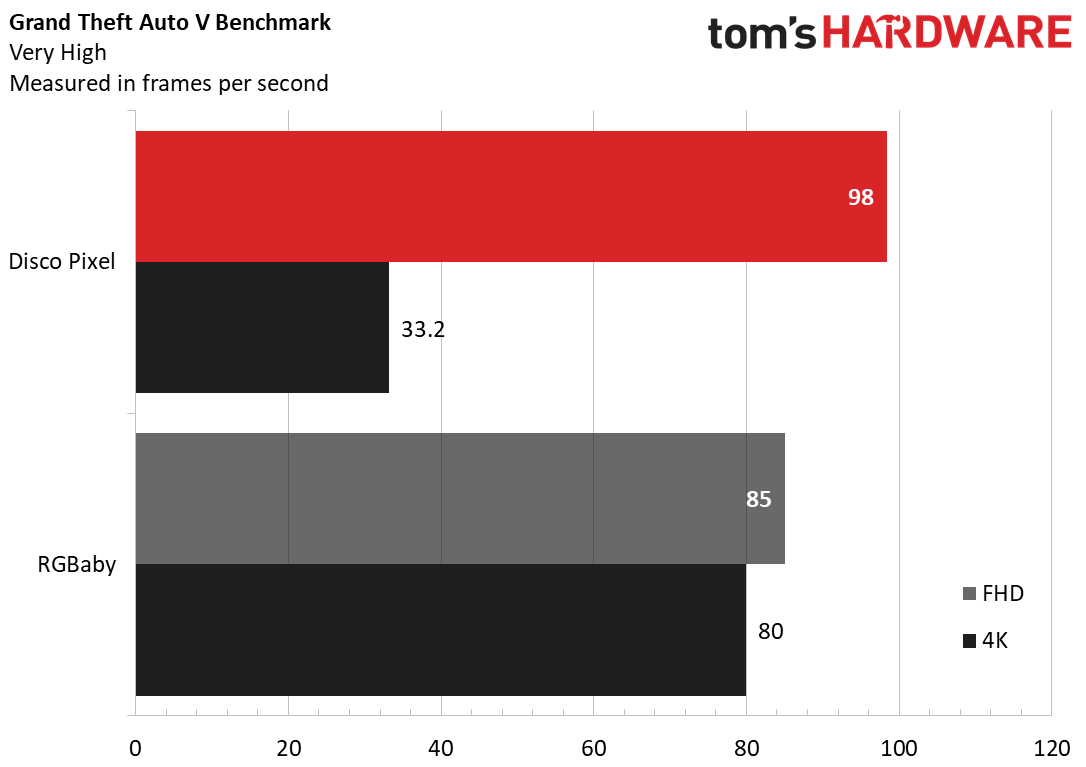
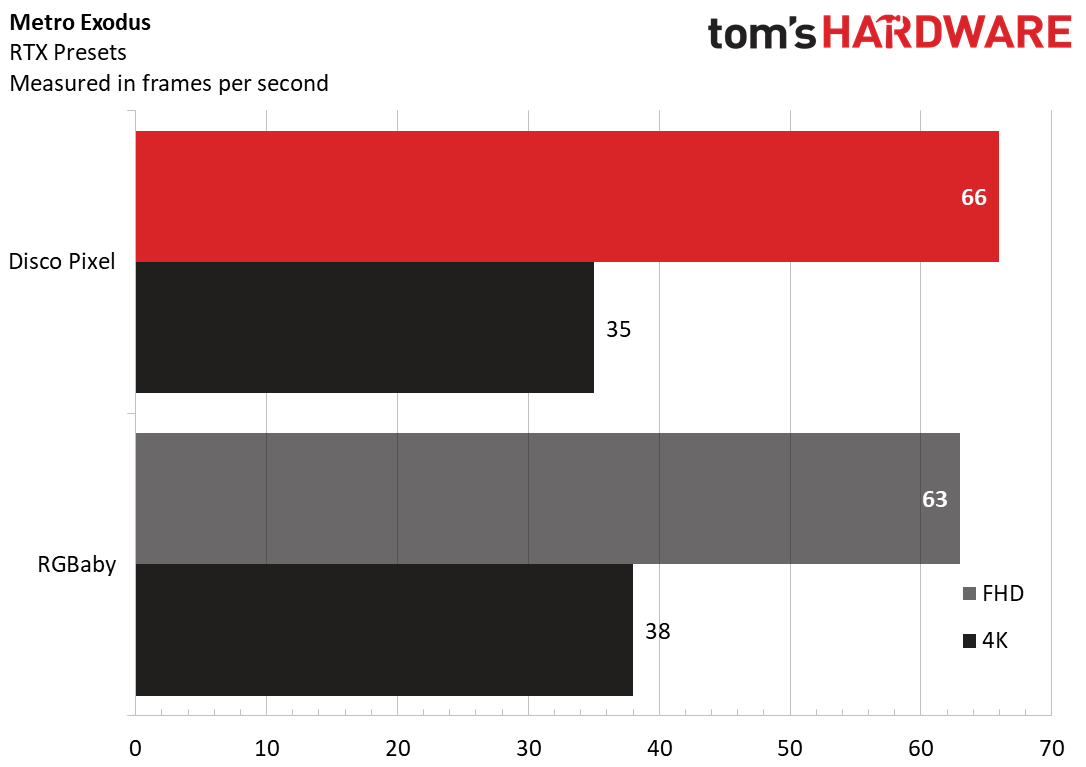
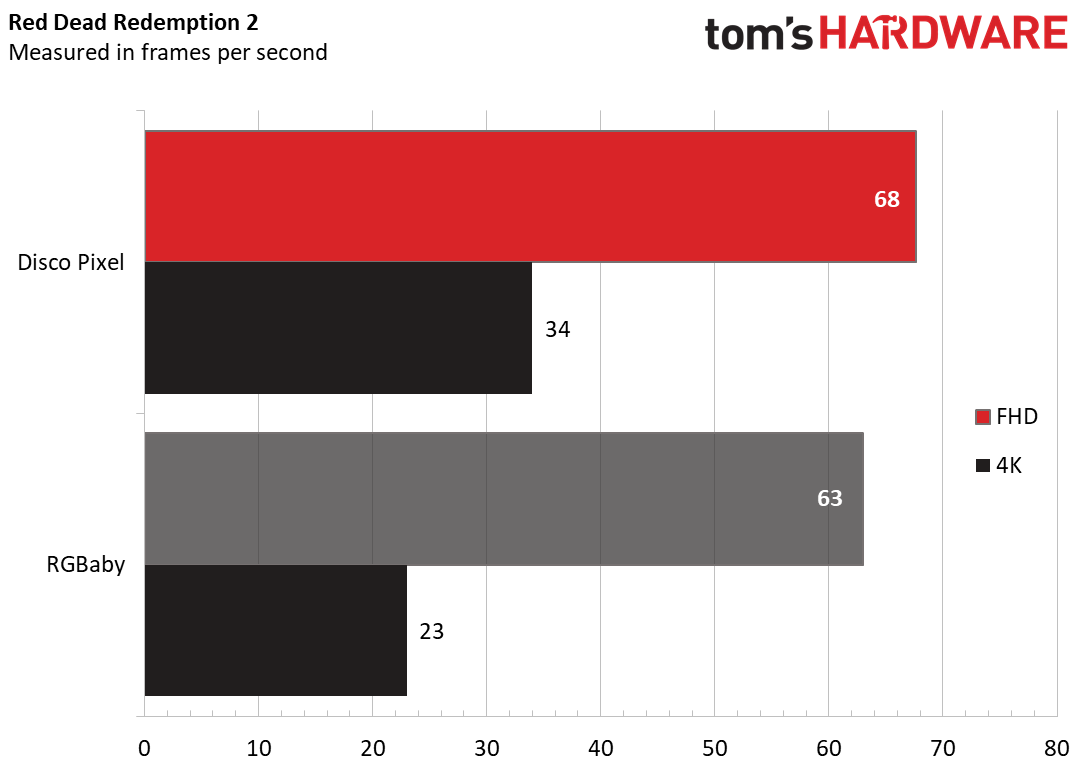
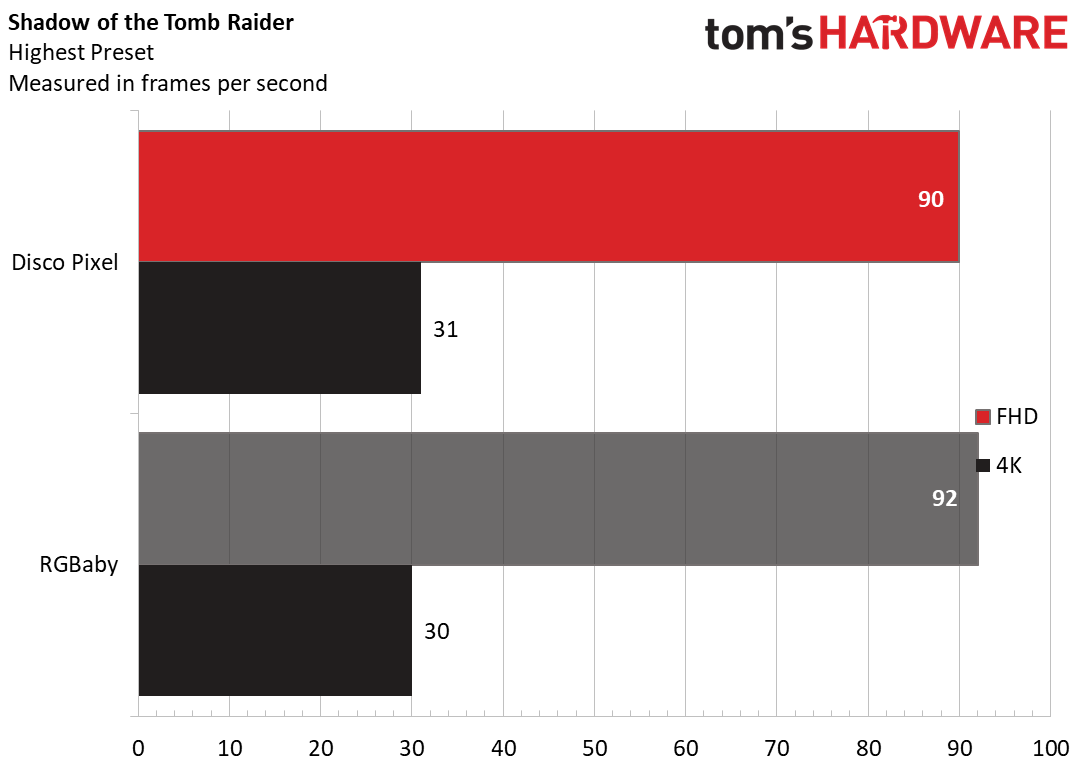
As for gaming performance, the Disco Pixel also did well, often sticking close to or outpacing the RGBaby with its RTX 2080, and pushing above 60 frames per second (fps) at 1080p on all of our test titles. Just note that if you plan on gaming at 4K, you’ll want to dial down some in-game settings for the most-demanding titles, or opt for a higher-end card like an RTX 2080 Super.
To temperature test the Disco Pixel, we ran Metro Exodus 15 times on a loop to simulate roughly half an hour of gaming. The CPU measured an average of 66.8 degrees Celsius (152.2 degrees Fahrenheit) and the GPU measured an average of 68.3 degrees Celsius (154.9 degrees Fahrenheit). Both of these temperatures are well within thermal limits, but the CPU temperature is a bit high given that we were running the processor at stock settings and a gaming load is generally much less stressful than many time-consuming CPU-specific tasks. If you want to overclock or you plan on doing lots of CPU-specific productivity work, we’d definitely recommend installing an exhaust fan to help eject warm air, as well as going with a higher-end cooler than the AMD stock model we installed here.
Conclusion
The Disco Pixel is one of the most colorful PCs we’ve ever built, thanks in large part to the InWin 309 case and Lian Li’s Strimer Plus cables. I know plenty of people don’t appreciate RGB lighting, but with so many of us stuck at home, it felt like a good time to build something visual, versatile, and powerful enough for some serious gaming and productivity.
If I had better access to parts, I would have installed a seventh matching fan at the back for exhaust, and probably a PCIe 4.0 SSD and extra storage to take better advantage of the Aorus X570 board’s plethora of features. But as it stands, the Disco Pixel is plenty powerful for most mainstream tasks, from high-speed gaming and streaming to video editing. It also lights up a room like no other PC I’ve ever assembled. But after another round of dealing with excessive RGB wiring and software, I’d be lying if I said I wasn’t looking forward to a future build with as little lighting as possible.
MORE: Best Gaming Desktops
MORE: How To Build A PC
MORE: All PC Builds Content
Current page: InWin 309 Case and Software Thoughts
Prev Page Build Notes: Room to Breathe and Daisy Chain PainAfter a rough start with the Mattel Aquarius as a child, Matt built his first PC in the late 1990s and ventured into mild PC modding in the early 2000s. He’s spent the last 15 years covering emerging technology for Smithsonian, Popular Science, and Consumer Reports, while testing components and PCs for Computer Shopper, PCMag and Digital Trends.
-
Unolocogringo You weren't one of those hippie type fellas were you?Reply
If so welcome to the club!!!
I sort of remember those days,most of them anyway.
As for the build????
I think garish would be putting it nicely.
But to each his/her own! -
deesider I don't get what the top fans are doing - isn't the exit from the top chamber blocked by the PSU?Reply -
Unolocogringo Reply
Th power supply inlet is behind the rear fan. the other two fans blow into an empty chamber that has vents on the right case panel.deesider said:I don't get what the top fans are doing - isn't the exit from the top chamber blocked by the PSU?
